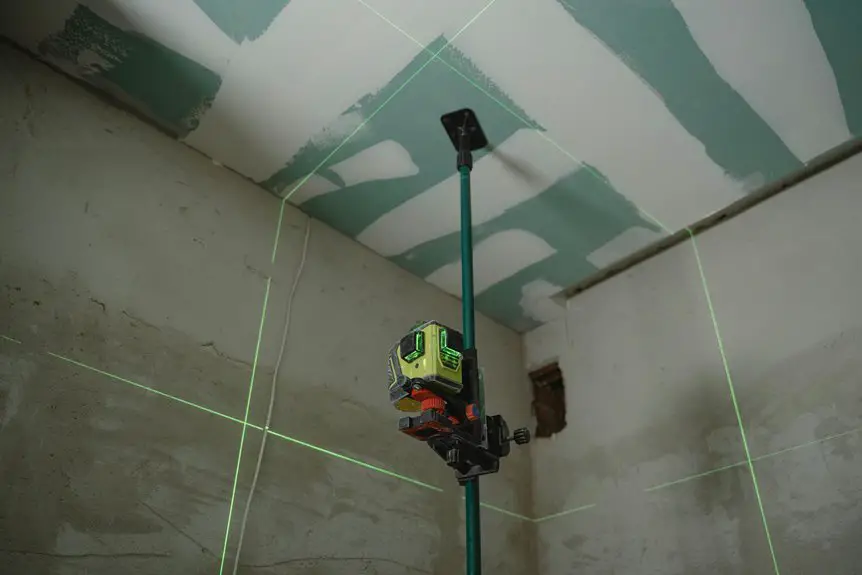When choosing between polyamide and steel, you’ll find polyamide is lightweight and flexible, ideal for shock absorption and easy handling. Steel offers unmatched strength and rigidity, making it perfect for heavy-duty uses but heavier and prone to corrosion without protection. Polyamide resists moisture and many chemicals naturally, while steel excels in durability and recyclability. Balancing cost, weight, and environmental impact is key. Explore how each material’s unique traits suit different engineering needs.
Table of Contents
Key Takeaways
- Steel offers superior tensile strength and durability for heavy-duty applications, while polyamide provides flexibility and impact resistance.
- Polyamide is lightweight with a density around 1.14 g/cm³, whereas steel is much heavier at 7.85 g/cm³, affecting design and transport.
- Polyamide is easier and cheaper to machine and mold, enabling faster production compared to energy-intensive steel fabrication.
- Steel is more corrosion-prone without coatings but highly recyclable; polyamide resists moisture and chemicals but poses recycling challenges.
- Initial costs are lower for polyamide due to ease of handling, but steel’s longevity may reduce long-term maintenance expenses.
Mechanical Properties of Polyamide and Steel
When comparing the mechanical properties of polyamide and steel, you’ll notice significant differences in strength, flexibility, and durability.
Steel offers exceptional tensile strength and rigidity, making it ideal for applications demanding heavy loads and impact resistance. Polyamide, on the other hand, provides more flexibility and resilience, which helps it absorb shocks without cracking.
Steel excels in strength and rigidity, while polyamide offers superior flexibility and shock absorption.
While steel is prone to permanent deformation under extreme stress, polyamide tends to return to its original shape, thanks to its elastomeric nature.
Durability-wise, steel withstands wear and tear over time but can corrode if not properly protected. Polyamide resists many chemicals and moisture, though it can degrade under prolonged UV exposure.
Depending on your needs, you’ll want to balance these mechanical traits for best performance in your project.
Weight and Density Considerations
Weight plays an essential role in choosing between polyamide and steel, especially if you’re aiming for efficiency and ease of handling. Polyamide is notably lighter, which can reduce the overall weight of your design, making transportation and installation easier. Steel, being denser, adds strength but also more weight, which might not suit applications where weight savings are critical. Consider the density and how it impacts your project’s performance.
| Material | Density (g/cm³) | Typical Use Cases |
|---|---|---|
| Polyamide | 1.13 – 1.15 | Lightweight components |
| Steel | 7.85 | Structural and heavy-duty |
| Aluminum | 2.70 | Lightweight metal option |
| Titanium | 4.50 | High strength/lightweight |
| Carbon Fiber | 1.60 | Ultra-lightweight parts |
Choosing polyamide helps if you want less weight without sacrificing too much strength.
Corrosion Resistance and Durability
You’ll want to evaluate how each material handles corrosion over time.
Polyamide naturally resists moisture and many chemicals, while steel needs protective coatings to prevent rust.
Understanding these factors helps you choose the best option for durability in your application.
Corrosion Resistance Properties
Although steel offers impressive strength, it often struggles with corrosion in harsh environments, requiring protective coatings or treatments.
You’ll find steel vulnerable to rust when exposed to moisture, salt, or chemicals, which can weaken its structure over time if not properly maintained.
On the other hand, polyamide naturally resists corrosion without extra protection. Since it’s a polymer, polyamide doesn’t oxidize or corrode like metals do, making it ideal for applications where exposure to water or chemicals is frequent.
However, polyamide can absorb moisture, which might slightly affect its mechanical properties but won’t cause traditional corrosion.
Long-Term Durability Factors
When choosing between polyamide and steel for long-term use, understanding how each material handles corrosion and wear is essential.
Polyamide naturally resists corrosion, making it ideal for environments with moisture or chemicals. It won’t rust, so you won’t have to worry about degradation from exposure to water or harsh substances.
Steel, on the other hand, is strong and durable but vulnerable to rust unless properly treated or coated. Over time, untreated steel may weaken due to corrosion, impacting its structural integrity.
However, steel’s toughness often outlasts polyamide under heavy mechanical stress. So, if your application involves constant friction or heavy loads, steel could offer better durability.
Ultimately, consider your environment and mechanical needs to choose the material that will last longest without frequent maintenance.
Cost Analysis and Economic Factors
Since budget constraints often dictate material choices, understanding the cost differences between polyamide and steel is essential.
Polyamide typically costs less upfront, making it attractive for projects with tight budgets. You’ll find it easier to handle and machine, reducing labor and production expenses.
Steel, while more expensive initially, offers greater strength and durability, which can lower maintenance and replacement costs over time.
When you factor in weight, polyamide’s lighter nature cuts down on transportation and installation expenses. However, if your application demands high load-bearing capacity, steel’s higher price may be justified by its performance.
Ultimately, your decision should weigh initial costs against long-term economic benefits, considering the specific requirements of your engineering project to choose the most cost-effective material.
Environmental Impact and Sustainability
Beyond costs, you’ll want to contemplate how polyamide and steel affect the environment and sustainability goals.
Polyamide, a type of plastic, typically requires less energy to produce than steel, which means lower carbon emissions during manufacturing. However, its reliance on fossil fuels and challenges in recycling can impact sustainability.
Steel, though energy-intensive to produce, is highly recyclable and often contains recycled content, reducing its environmental footprint over time.
When choosing between them, consider these factors:
- Polyamide’s lower production energy versus steel’s recyclability
- Fossil fuel dependency of polyamide
- Steel’s longer lifecycle and durability
- Waste management and recycling infrastructure
- Potential for developing bio-based polyamides
Balancing these aspects helps you make a greener, more informed material choice.
Common Applications and Use Cases
Both polyamide and steel serve diverse roles across industries, each offering unique advantages that suit specific applications. When you need lightweight, corrosion-resistant components, polyamide is your go-to, often used in automotive parts, electrical connectors, and consumer goods. Steel, on the other hand, excels in strength and durability, making it ideal for construction, heavy machinery, and infrastructure.
| Polyamide Applications | Steel Applications |
|---|---|
| Automotive components | Structural frameworks |
| Electrical connectors | Heavy machinery parts |
| Consumer goods | Bridges and buildings |
| Wear-resistant gears | Tools and industrial equipment |
Choosing between them depends on your specific needs—polyamide offers flexibility and corrosion resistance, while steel provides unmatched strength and load-bearing capacity.
Manufacturing and Fabrication Processes
When you compare polyamide and steel, you’ll notice their production techniques and machining methods differ considerably.
You’ll want to reflect on how each material shapes up regarding cost and manufacturing efficiency. Understanding these factors helps you choose the right material for your project.
Production Techniques Overview
Although polyamide and steel serve different purposes, their production techniques reveal distinct approaches tailored to their material properties.
When you work with polyamide, you rely on processes optimized for polymers, while steel demands methods suited to metals’ strength and durability. Understanding these differences helps you choose the right material and manufacturing route for your project.
- Polyamide is commonly produced through injection molding and extrusion, allowing complex shapes and high-volume output.
- Steel is typically manufactured via casting, rolling, and forging, emphasizing structural integrity.
- Polyamide production often involves precise temperature control to maintain polymer properties.
- Steel production requires controlled cooling and heat treatment to achieve desired mechanical characteristics.
- Both materials undergo quality inspections to guarantee performance standards are met.
Knowing these techniques lets you optimize design and cost effectively.
Machining and Forming Methods
Since polyamide and steel have vastly different physical properties, you’ll need to use distinct machining and forming methods tailored to each material.
Polyamide, being a thermoplastic, machines easily with standard tools but requires sharp cutters and controlled speeds to prevent melting or deformation. You can also mold polyamide through injection or compression molding, allowing complex shapes without extensive post-processing.
Steel, on the other hand, demands more robust equipment for machining due to its hardness. You’ll often use CNC milling, turning, or grinding with cutting fluids to manage heat and wear. Forming steel typically involves forging, rolling, or stamping, which reshape it under high pressure.
Understanding these differences guarantees you select appropriate processes, maintain material integrity, and achieve precise results in your projects.
Cost and Efficiency Factors
Because polyamide and steel require different manufacturing and fabrication processes, their cost and efficiency factors vary greatly.
When you choose polyamide, you benefit from lower energy consumption and faster production cycles compared to steel. However, steel offers superior durability, which may reduce long-term costs despite higher initial expenses.
Consider these points when deciding:
- Polyamide molding methods, like injection molding, speed up mass production.
- Steel fabrication often involves energy-intensive processes like forging and welding.
- Tooling costs for polyamide can be lower due to simpler machinery.
- Steel parts may need additional finishing, increasing time and cost.
- Polyamide’s lightweight nature reduces transportation expenses.
Knowing these factors helps you balance upfront costs with efficiency and final application needs effectively.
Frequently Asked Questions
How Do Polyamide and Steel Compare in Electrical Conductivity?
You’d think polyamide could light up a city, but it’s an insulator with almost zero electrical conductivity. Steel, on the other hand, conducts electricity well, making polyamide the better choice when you want to avoid electric flow.
Are There Any Health Risks Associated With Handling Polyamide or Steel?
You won’t face major health risks handling polyamide or steel casually, but avoid inhaling dust or fumes during cutting or welding. Gloves help prevent skin irritation, and good ventilation keeps your workspace safe.
What Are the Thermal Expansion Rates of Polyamide Versus Steel?
You’ll find polyamide expands much more with heat, around 80-100 x10⁻⁶/°C, while steel’s rate is lower, about 11-13 x10⁻⁶/°C. So, expect greater dimensional changes when heating polyamide than steel.
Can Polyamide Be Recycled as Easily as Steel?
Recycling polyamide isn’t a walk in the park like steel’s straightforward metal melt-down. You’ll find steel’s recycling process simpler and more efficient, while polyamide needs careful sorting and cleaning to bounce back into new products.
How Do Polyamide and Steel Perform Under UV Exposure?
Under UV exposure, polyamide tends to degrade and lose strength unless treated with stabilizers, while steel resists UV damage well but may corrode if unprotected. You’ll need coatings for steel and additives for polyamide.
- Is Polyamide a Good Fabric for Reusable Face Masks? - June 30, 2025
- Is Polyamide Film Resistant to Brake Fluid? A Compatibility Guide - June 30, 2025
- An Introduction to Polyamide Fiber-Reinforced Polymers (FRPs) - June 30, 2025







